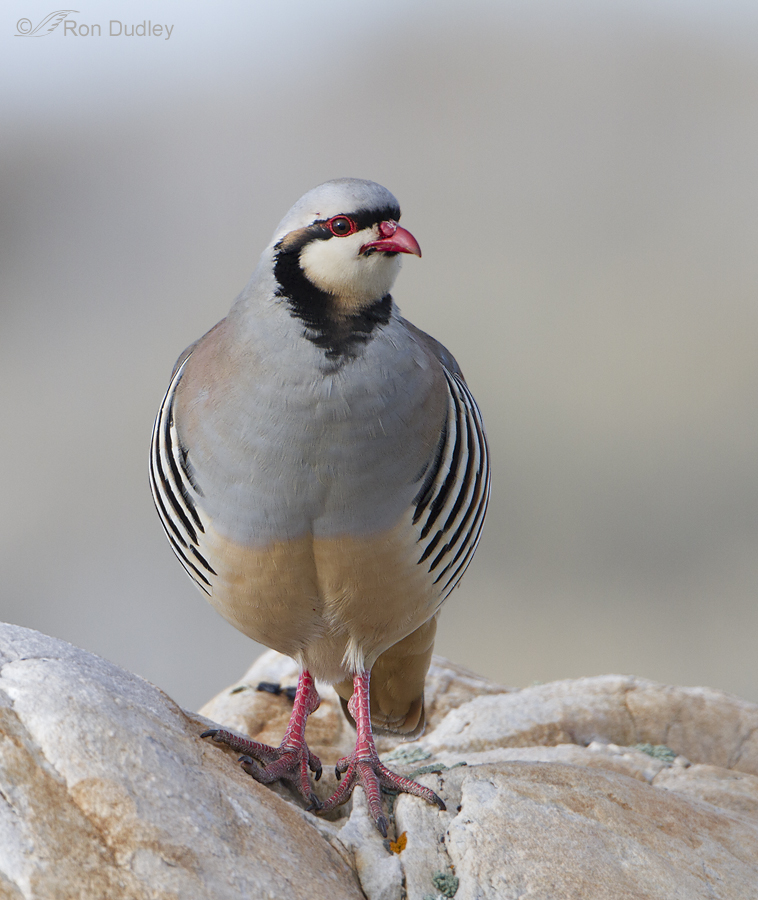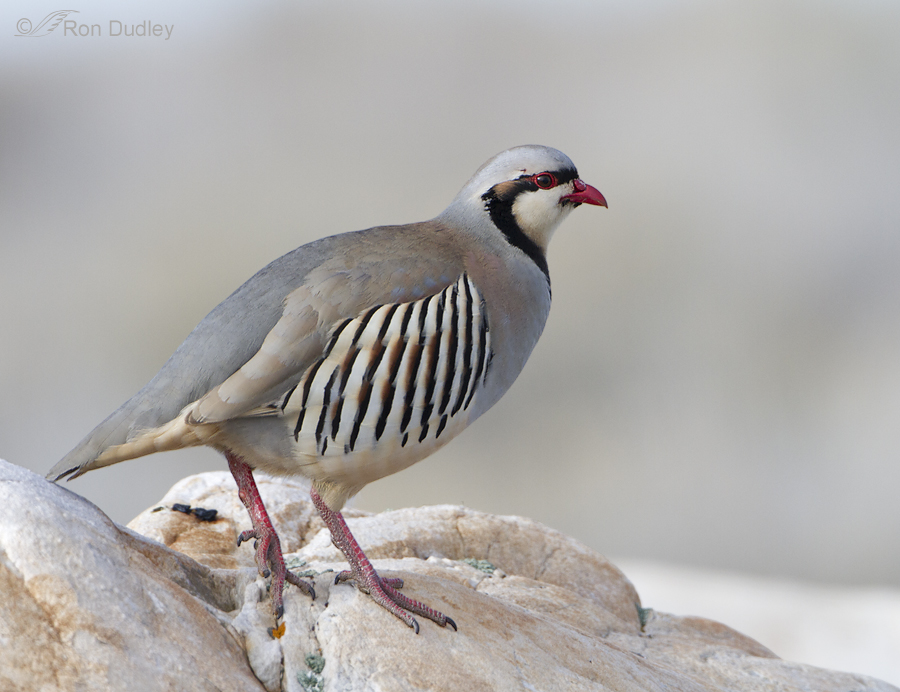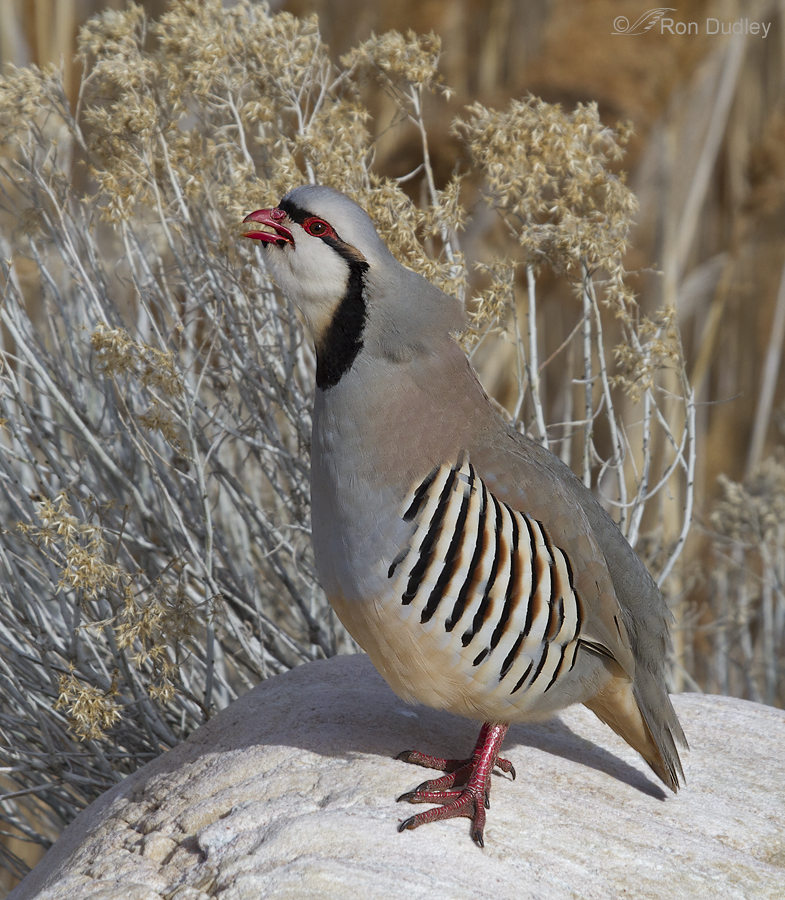Our Chukars are generally easier to approach in the spring and early summer than they are the rest of the year. Right now, pair bonds are being formed and the birds seem more concerned with others of their own kind than they are about me and my pickup. And this time of year Chukars like to call from elevated perches (especially rocks) which they’re often reluctant to abandon when a vehicle approaches. In addition, coveys of these birds often post a sentry as the rest of the flock is foraging for food and the sentry is sometimes easy to get close to.
Each of these photos was taken this past week on Antelope Island.
1/800, f/7.1, ISO 500, 500 f/4, 1.4 tc, natural light
Many folks are unfamiliar with the Chukar so I’m presenting these first two images for their clear, detailed look at the bird, first from the front…
1/800, f/7.1, ISO 500, 500 f/4, 1.4 tc, natural light
and then from the side. Their plumage pattern is unique among North American game birds with that distinctive black line running through their forehead, eyes and down the neck, their red legs and bill and the prominent chestnut barring on the flanks.
This bird was perched on one of the many white Tintic Quartzite boulders that are so common on the north end of the island.
1/1000, f/6.3, ISO 500, 100-400 @ 400mm, natural light
This one was so “sticky” that I had to switch to my 100-400mm zoom lens to get it all in the frame.
1/2000, f/7.1, ISO 500, 100-400 @ 285mm, natural light
And this bird was even stickier. Notice that I’m only at 285mm for the shot. When they’re calling like this they’re often very reluctant to leave the perch.
There are times in the early mornings on the island when there are so many Chukars calling with their sounds bouncing off the hillsides from every direction that it almost sounds like the island is crawling with domestic chickens. Here’s a link to one of their calls if you’re interested (scroll about half way down).
Ron






I hear how they get their name, and such a pretty bird.
Wonderful series! Thanks so much for sharing. I have never seen one of these attractive birds.
Charlotte
What a beautiful bird…and again, great photos.
Thank you. You are right about the chicken noise, but a chicken with its beak full. Love the bird, love its call.
Beautiful portraits of spectacular birds! Just wanted to mention that they are not native. They have been released as game birds and subsequently established themselves in some habitats. I understand that hunters appreciate them for the challenge, as they flush suddenly and athletically fly straight up. (Not my idea of wildlife appreciation, mind you.) Anyway, they are hatched out by the hundreds of thousands at game farms in Texas, so there is no concern about depletion of the population by hunters. I’ve rehabbed a few and enjoyed their plucky personalities. The males test each other in a violent ritualized dance/attack that always circles to the right. Thank you Ron for making my morning, once again!
Thanks for this info, it already makes me feel better. I was already getting a bit concerned for their being in a “game” category.
You’re right, Mikal – from everything I’ve heard these birds around here are a very difficult quarry for hunters. They prefer steep, dry slopes in Utah and hunters must work very, very hard for their birds. As far as I’m aware hunting is not threatening their populations anywhere in Utah.
Ron: beautiful shots. I get so worried, however, that these birds will be eventually killed off because they are game birds. Do you think some of them are able to survive the hunting seasons?
Maria, These birds on Antelope Island aren’t hunted because the island is a state park. It’s a wild population that was introduced there many years ago and they are thriving.
Excellent as usual!
The color, DOF, clarity of the shot, and the closeness to your subject is fantastic!! I suspect these were taken from your truck?
Man, I have to get a ‘noodle’!! LOL
Good Morning, Dick. Yep, all taken from my truck using the Noodle on the window, as per usual.